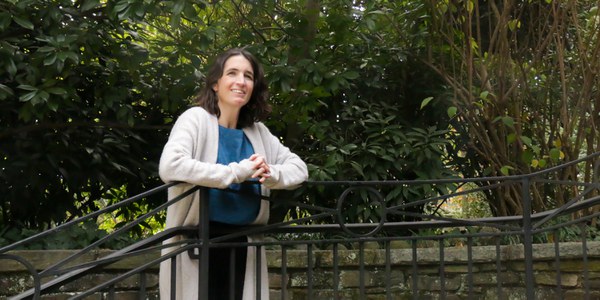Rosabella Alvarez-Calderón, professor in the Department of Architecture at Pontificia Universidad Católica del Perú, was a Mellon History Teaching Fellow in Landscape Studies in fall 2021. Her research report, “Negotiating the Future of a Prehispanic Landscape in the Modern City of Lima, Peru” explored how we understand and create narratives about the past of modern cities built over historic cultural landscapes.
Q&A with Rosabella Alvarez-Calderón
What is the role of prehispanic sites in Lima?
When Lima was founded by Spanish conquistadors in 1535, it was built over an existing cultural landscape with a deeply embedded history several thousand years old. The modern city has made much of this landscape invisible, though some sites still survive to this day. My research and the course I am working on proposes that the current shape of the city and its prehispanic landscape is the result of ongoing processes of dialogue and conflict between different stakeholders.
The heritage of prehispanic sites, known locally as huacas, is contested due to conflicting perspectives on why and how to conserve, who benefits and how, and who defines “legitimate” uses. Huacas could alleviate the lack of sufficient accessible public spaces in Lima. However, for huacas to do so, we must address how we associate ruin and decay with neglect and “undesirable” uses, rethinking the right to public space and knowledge of the past and considering whose values are being upheld.
While a few sites are well-preserved and have become popular open-air museums, most remain vulnerable, inaccessible, and used as places to dump waste. Others are popular with hikers and off-road bikers. Archaeologists initially were appalled at the damage caused by these activities, but they realized this was another form of appreciating the sites. In a few cases, agreements have been reached where visitors can enjoy the sites while minimizing impact.
As a Mellon History Teaching Fellow, you have been rethinking how we teach the history of urban landscapes. How have you taught about the urban landscape?
I have been expanding the scope of my course Huaca y Ciudad (The Archaeological Site and the City) to include how we read and understand the prehispanic cultural landscape through age value (an appreciation of the physical age of objects), ruin, inequality, identity, and accessibility. Most of my students are designers, architects, and engineers, so my role is to instill sensitivity, creativity, and empathy for how the past has shaped and still shapes the urban experience. I aim for my students to use research and design to understand the past of huacas and to envision a future for them not as restricted archaeological sites but as accessible urban community spaces.
In 2021, I taught a course called “Walkable Cities,” which focused on understanding urban landscapes through walking. The course took place during lockdown with students attending class from all over Peru. Since I couldn’t focus on a single place, the course was not so much “history teaching” as it was developing and providing tools for students to learn about place and to develop landscape literacy. Each week centered on a different theme, such as nighttime, the senses, and disability and different bodies. Many students remarked on the surprising ways these walks taught them about their own neighborhoods. They told stories of discovering fruit trees, the smells and sounds at different times of the day, and the oldest buildings in their block. One student remarked upon the many badly designed and maintained ramps in her city and the challenges they pose for people with limited mobility.
How have you been reconsidering the pedagogy of these courses?
I have been researching how societies understand and relate to urban ruins in cities with many historical layers. I am especially interested in how societies embrace, reject, or are ambivalent about the material remains of the past, how they define heritage and value, and how ancient ruins and more recently abandoned structures from the nineteenth and twentieth centuries are used. I am interested in what are considered legitimate uses and users for these sites and the histories of place narratives we create around them. At one end of the heritage and value spectrum are “great” prehispanic monuments and sites that have been converted into tourist sites in countries like Peru and Mexico, where they have helped create post-colonial national identities. At the other end are industrial ruins and brownfields, which are sometimes seen as “too recent” to be historically significant or are under ambiguous ownership and legal constraints.
I also wish to highlight the Dumbarton Oaks community, especially the mentorship of [Director of Garden and Landscape Studies] Thaïsa Way, as well as the many robust and critical discussions on pedagogy and the opportunity to share tools and resources with the other History Teaching fellows. I have learned much about how communities, especially historically marginalized and vulnerable people, have wielded history to combat inequality and injustice, address prejudices, and demand their heritage places be respected and acknowledged.
May Wang is postgraduate writing and reporting fellow. Photo by Emily Orr, humanities fellow.

